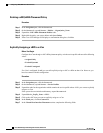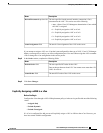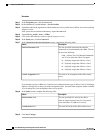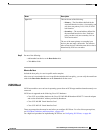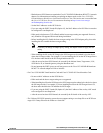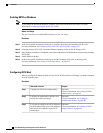
• Virtual Media Boot —To boot from virtual media that mimics the insertion of a physical CD or floppy
drive into a server, continue with Configuring a Virtual Media Boot for a Boot Policy, on page 466.
What to Do Next
Include the boot policy in a service profile and/or template.
After a server is associated with a service profile that includes this boot policy, you can verify the actual boot
order in the Boot Order Details area on the General tab for the server.
SAN Boot
You can configure a boot policy to boot one or more servers from an operating system image on the SAN.
The boot policy can include a primary and a secondary SAN boot. If the primary boot fails, the server attempts
to boot from the secondary.
We recommend that you use a SAN boot, because it offers the most service profile mobility within the system.
If you boot from the SAN when you move a service profile from one server to another, the new server boots
from the exact same operating system image. Therefore, the new server appears to be the exact same server
to the network.
To use a SAN boot, ensure that the following is configured:
• The Cisco UCS domain must be able to communicate with the SAN storage device that hosts the operating
system image.
• A boot target LUN on the device where the operating system image is located.
Configuring a SAN Boot for a Boot Policy
You can also create a local boot policy that is restricted to a service profile or service profile template. However,
except for iSCSI boot, we recommend that you create a global boot policy that can be included in multiple
service profiles or service profile templates.
We recommend that the boot order in a boot policy include either a local disk or a SAN LUN, but not
both, to avoid the possibility of the server booting from the wrong storage type. If you configure a local
disk and a SAN LUN for the boot order storage type and the operating system or logical volume manager
(LVM) is configured incorrectly, the server might boot from the local disk rather than the SAN LUN.
For example, on a server with Red Hat Linux installed, where the LVM is configured with default LV
names and the boot order is configured with a SAN LUN and a local disk, Linux reports that there are
two LVs with the same name and boots from the LV with the lowest SCSI ID, which could be the local
disk.
Tip
This procedure continues directly from Creating a Boot Policy, on page 440.
Cisco UCS Manager GUI Configuration Guide, Release 2.0
OL-25712-04 441
SAN Boot




